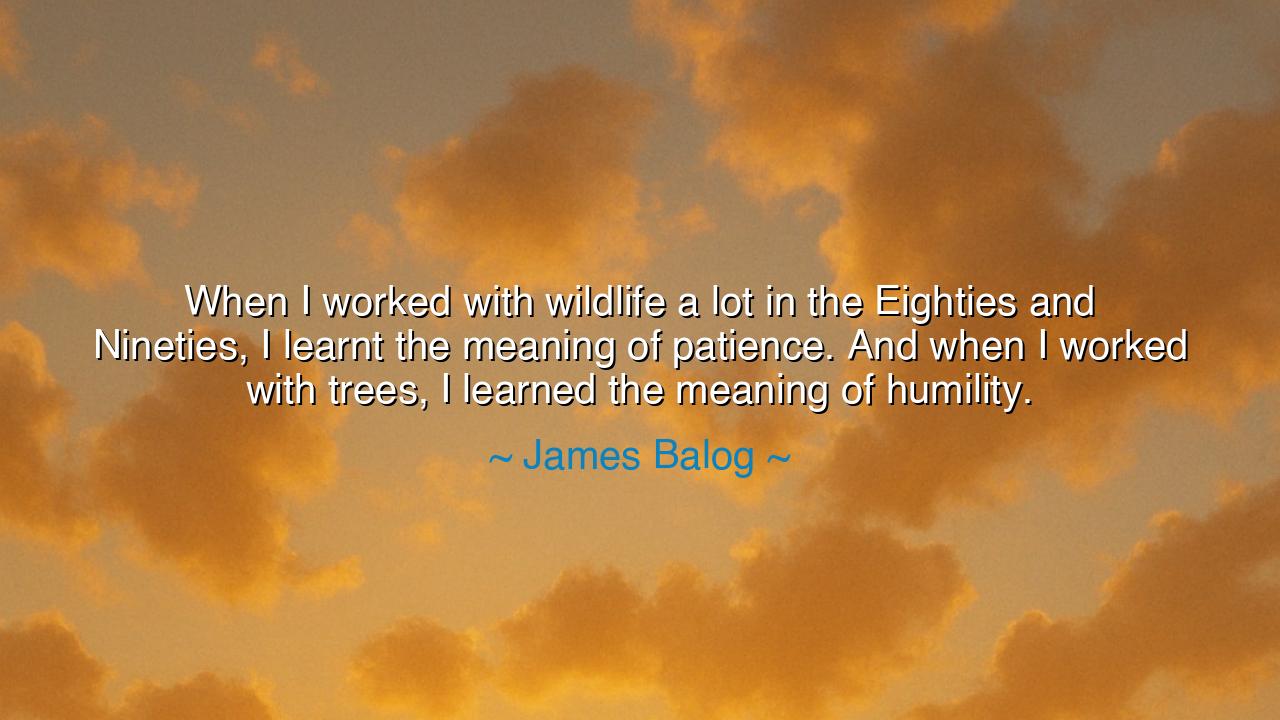
When I worked with wildlife a lot in the Eighties and Nineties
When I worked with wildlife a lot in the Eighties and Nineties, I learnt the meaning of patience. And when I worked with trees, I learned the meaning of humility.






Hear, O seekers of wisdom in nature, the words of James Balog, the watcher of ice and forests, the chronicler of earth’s fragile beauty. He declared: “When I worked with wildlife a lot in the Eighties and Nineties, I learnt the meaning of patience. And when I worked with trees, I learned the meaning of humility.” These words, though simple, shine with the power of deep encounter. They remind us that the world itself is a teacher, and that the animals and trees, often overlooked by men, are masters in the great school of life.
For in wildlife, Balog discovered the essence of patience. To study animals is to step into their rhythm, which is slower, subtler, and beyond human command. A bird will not land because we demand it; a deer will not emerge from the forest because we will it. One must wait, and wait again, until the creatures choose to reveal themselves. Thus, patience is forged, not as passive idleness, but as an active trust in time itself. From the gazelle on the plains to the eagle in the sky, the lesson is always the same: the world moves at its own pace, and we must bend to it if we wish to truly see.
So too with trees, Balog found humility. For what are trees but the most silent of elders, rising tall while generations of men are born and die at their roots? A tree does not hurry; it does not clamor for recognition. It grows slowly, season by season, lifting itself skyward with quiet endurance. To stand among ancient forests is to feel one’s own smallness, to know that our lives are but a blink compared to the centuries stored in bark and ring. Trees humble us by showing how brief we are, and how much greater is the patient labor of the earth.
Consider, O listener, the story of Charles Darwin. His patient years of observing finches in the Galápagos, watching slight changes across species, trained him in the same patience that Balog speaks of. Had Darwin rushed, had he demanded instant answers, the great theory of evolution would never have been revealed. And consider, too, the Japanese reverence for the cherry tree. In their brief blossoms, people see the fleeting nature of life; in their enduring trunks, they see strength that outlasts dynasties. Here again, humility before nature becomes the path to wisdom.
Balog’s insight is not only about animals and trees—it is about the human spirit. For in our age, where impatience drives us to chase quick results and arrogance tempts us to believe we are masters of the earth, we need these lessons more than ever. Patience teaches us to wait, to listen, to allow life to unfold beyond our control. Humility teaches us to recognize our place, not as rulers above, but as participants within the web of life. Without these, we become blind, rushing forward while cutting down the very roots that sustain us.
What lesson, then, must we take? That to live wisely, we must learn from the world itself. Seek patience in your dealings with others, as though you were waiting for a wild creature to emerge in its own time. Seek humility in your ambitions, remembering that even the tallest tree began as a seed, and that its greatness lies not in haste but in quiet strength. These are not weak virtues, but heroic ones, for they require restraint in an age of noise and reverence in an age of pride.
Therefore, O child of tomorrow, go out into the world as Balog did, and let nature instruct you. Watch the animals until you, too, learn to wait without despair. Stand among the trees until you feel your heart bow in humility. And carry these lessons into your life, that you may endure trials with patience and walk in greatness without arrogance. For the wilderness and the forest whisper truths that no classroom can teach, and those who listen will find not only wisdom, but peace.






AAdministratorAdministrator
Welcome, honored guests. Please leave a comment, we will respond soon